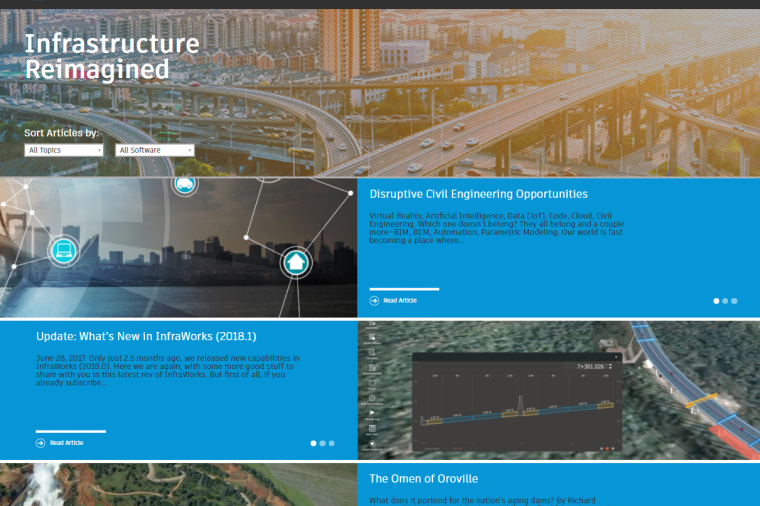How the Cloud is Helping University Campuses Take Back Control of AEC Data

From design, construction, to facilities management, the need for closer ownership is clear.
Who’s got your data? For anyone in the business of campus design, construction and facilities management, data is a vital asset. Information about each stage of these projects needs to be in the right hands, at the right time to ensure projects are completed on-schedule and on-budget. Yet too often access to data is restricted by systems that don’t talk to each other, legacy data ownership practices that limit collaboration, and workflows that limit agility and efficiency.
Fortunately, cloud technologies are introducing new opportunities for greater data ownership and collaboration across design, construction, and building management initiatives. They are also helping realize significant cost- and time-savings.
Let’s look at the cloud is transforming data ownership within each phase of the project lifecycle.
Bringing efficiencies to the design/review process through data ownership
University architects are charged with a critical role: planning for the future of university and college campuses while building and renovating facilities to meet current needs. However, traditional design and review process can often get in the way of efficiencies. While many contractors and consultants already have sophisticated collaboration systems to make sure project delivery is handled efficiently and reviews are tracked, those technologies aren’t always fully leveraged. Indeed, architects and project owners are always looking for ways to improve this process and make it more structured.
One way to do this is through building information modeling (BIM). BIM is an intelligent 3D model-based process that gives architecture, engineering, and construction (AEC) professionals the insight and tools to more efficiently plan, design, construct, and manage buildings and infrastructure.
Now, it’s important to know that BIM can bring efficiencies to the design/review process even if the project didn’t use BIM in the first place. Likewise, exploring new avenues for BIM can also help education institutions that already have BIM standards in place to implement those programs in a more robust way on future projects.
One way to meet both these needs is to leverage cloud-based collaboration platforms to transform the design review process by putting data in the hands of those who need it within the office of architecture. Accessible 24x7, these tools support viewing, commenting, and the comparing of design versions – both CAD and BIM files. Consultants post work when they are ready for an architect to review it. And, because data is in the cloud, it can be accessed anytime, anywhere – in the office and on-site – for collaborative feedback. This centralized approach also ensures that architects can quickly and easily find the project information they need and because everyone is working off the same environment, they can have confidence that version control is not an issue. That information then remains in the cloud instance and is available for downstream phases of the project.
Not only does this give university architects closer ownership over data, but it also forges a path to embracing other BIM technologies or augmenting existing BIM investments for even greater efficiencies.
Building owners are “owning” data to improve decision making in the field
Once the design moves to the construction phase, building owners can also benefit from greater data ownership. Traditionally, they have relied on construction management firms to provide the software for managing and tracking everything associated with the project.
The challenge with this approach is that building owners don’t always know for sure if all the necessary data has been captured and provided to them. Furthermore, owners want a single method for integrating data to their computerized maintenance management software (CMMS) – something that is hard to achieve when there are multiple construction systems in use.
An increasing number of owners are looking to bring this function in house so that they can own the data, standardize processes for future projects, and aid the integration to backend systems. Like designers, some are embracing BIM while others have yet to do so.
To achieve these goals, building owners can embrace cloud tools to achieve greater ownership over project data. With these tools they can store, access, and share the latest models, drawings, or any information associated with the project – and, most importantly, access that data on the go from a mobile app 24x7. This aids in completing quality and safety checks, creating and editing issues, viewing and editing daily logs, accessing plans and project files, managing issues and checklists, and more. Plus, that data integrates seamlessly with in-house CMMS systems. It’s also both the first step to BIM and an innovative way to enhance existing BIM workflows.
Putting vital building data in the hands of facility teams
Finally, university facility directors are always looking for ways to put data into the hands of users quickly and seamlessly. Typically, they use CMMS to produce work orders and manage assets. This information is then accessed by field staff via their laptops. The problem is that these systems don’t provide limited functionality. For example, facilities generate a vast amount of information including O&M files, CAD files, BIM models, drawings, etc. This information can’t be conveyed and shared via traditional CMMS, making it hard to get the right information into the right hands at the right time.
Just as design and construction teams can benefit from cloud-based project tools, so too can facilities managers. With a mobile-first asset and maintenance management solution, contractors and building owners can deliver real-time project information from early design through construction and operations to the people who need it. This means that facility directors have access to the information they need from day one.
Whether they are undergoing a capital project or looking to digitize a campus’ drawing sets, they have as-built information at their fingertips for troubleshooting, maintenance, and build-outs. For example, if teams need to open an operations manual for specific pieces of equipment they are working on they can do it right from their mobile device. If they have a pipe freeze in the building, users can quickly trace which specific valve and pipelines they need to shut down to avoid costly repairs, without needing to do time-consuming discovery.
These tools literally put blueprints, punch lists, comparative sheet overlays, and mark-up tools in the pockets of those on the front lines of building operations and maintenance. Field teams can directly access and update asset information, get greater insight into building performance and operations, share that data to back-end systems, and realize the value of BIM in building operations – whether they’re an existing BIM shop or not!
Facilities Inspection
At some point, the COVID-19 crisis should subside and facilities that have been empty for several weeks will begin to be occupied. Amongst some of the issues will be the need to perform quality and sanitary inspections. Cloud technology can also play an important part on this process; again the benefits go to whoever owns the data. So owners are looking to implement their own system for capturing data associated with sanitary inspections.
BIM at your pace
Rather than depend on inflexible legacy tools, the cloud makes it possible to take ownership of data from design, to construction, to facilities management in a seamless, collaborative, and cost-efficient way. Furthermore, the cloud has made it possible to implement a system that delivers benefits today while setting the stage for teams to be ready for BIM later.
Universities who have adopted BIM standards can leverage these tools to help them more easily meet or exceed the requirements for a common data environment that enables the seamless and managed exchange of project information across all disciplines, from design through construction and turnover.
















































